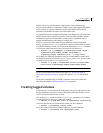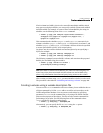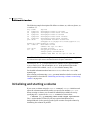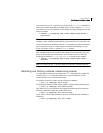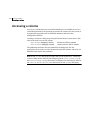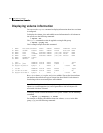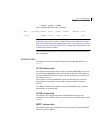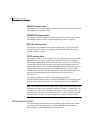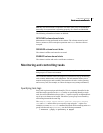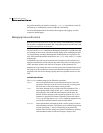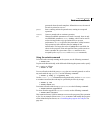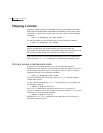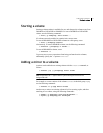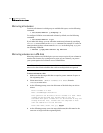
265Administering volumes
Displaying volume information
# vxprint -g mydg -t voldef
This is example output from this command:
V NAME RVG/VSET/COKSTATE STATE LENGTH READPOL PREFPLEX UTYPE
v voldef - ENABLED ACTIVE 20480 SELECT - fsgen
Note: If you enable enclosure-based naming, and use the vxprint command to
display the structure of a volume, it shows enclosure-based disk device names
(disk access names) rather than c#t#d# names. See “Discovering the association
between enclosure and OS based disk names” on page 94 for information on how
to obtain the true device names.
The following section describes the meaning of the various volume states that
may be displayed.
Volume states
The following volume states may be displayed by VxVM commands such as
vxprint:
ACTIVE volume state
The volume has been started (kernel state is currently ENABLED) or was in use
(kernel state was ENABLED) when the machine was rebooted. If the volume is
currently ENABLED, the state of its plexes at any moment is not certain (since
the volume is in use).
If the volume is currently DISABLED, this means that the plexes cannot be
guaranteed to be consistent, but are made consistent when the volume is
started.
For a RAID-5 volume, if the volume is currently DISABLED, parity cannot be
guaranteed to be synchronized.
CLEAN volume state
The volume is not started (kernel state is DISABLED) and its plexes are
synchronized. For a RAID-5 volume, its plex stripes are consistent and its parity
is good.
EMPTY volume state
The volume contents are not initialized. The kernel state is always DISABLED
when the volume is EMPTY.



